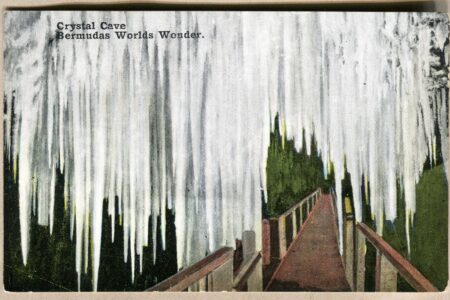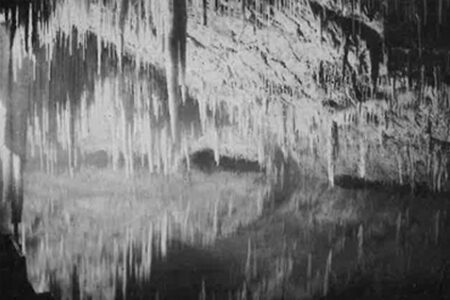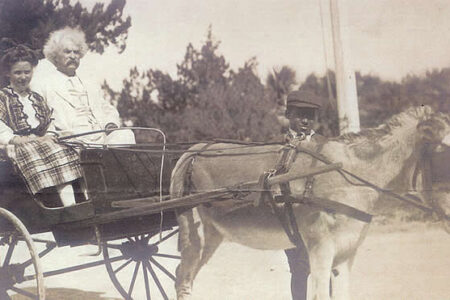In 1907, Carl Gibbon and Edgar Hollis were engaged in a spirited game of cricket. One of the lads struck the ball with ferocity and it disappeared into a hole several yards away. This ball was a prized possession and no effort was spared at attempting to retrieve it. As one of the boys crawled down deeper and deeper, it became apparent that this was not your ordinary hole. What the boys had discovered was, in fact, the entrance to a spectacular natural wonder.
When the Wilkinson family, owners of the property since 1884, were told of this discovery, they wasted no time in setting off to explore the entrance and to find out how deep it went. Bernard Wilkinson, the fourteen-year-old son of Mr. Julian Wilkinson, was lowered into the hole by his father using a strong rope tied to a tree. Bernard descended 140 feet with a lamp from a bicycle to light his way.
What he found was beyond his or the Wilkinson family’s wildest dreams. It was an underground world of delicate splendor with magnificent crystal formations of every size and shape surrounding a clear lake 55 feet deep.
Over the past century the caves have become Bermuda’s favorite attraction for thousands of visitors every year. On his second sojourn to Bermuda, Mark Twain stopped at the caves on a journey to St. George’s and described the experience: – “We descended 150 steps and stood in a splendid place 250 feet long and 30 or 40 wide, with a brilliant lake of clear water under our feet and all the roof overhead splendid with shining stalactites, thousands and thousands of them as white as sugar, and thousands and thousands brown and pink and other tints. All lighted with acetylene jets.”
Much has been done through the decades to upgrade the accessibility and the comfort level for our visitors. But nothing can enhance this exquisite fantasy world that Mother Nature began over 30 million years ago. When they enter the caves, every visitor still feels the same sense of awe experienced that day over a century ago.
Cinematic History
The Crystal Caves became part of cinematic history in 1913 when they were used as a filming location for the motion picture Neptune’s Daughter, “an eight-reel spectacular triumph” produced by Universal Pictures.
Bermuda’s caves appear early in the fantasy film when Neptune’s daughter, a mermaid, visits the Witch’s Cave where she pleads with the Sea Witch to make her mortal. She is determined to avenge the death of her sister, killed in the nets of the local fisherman but her plans go awry when she instead falls in love with the King.
The silent movie was filmed entirely on location in Bermuda and starred Annette Kellerman, an Australian actress well known for her long-distance swimming and choice of one-piece swimming costume. Neptune’s Daughter was released in 1914, cost approximately $50,000 to make and grossed one million dollars at the box office.








